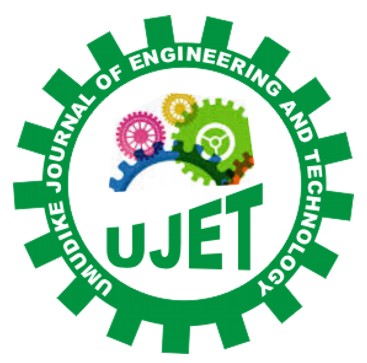|
Oguanobi, N. C.
Department of Chemical Engineering, Michael Okpara University of Agriculture, Umudike, Abia State, Nigeria
Ude, N. C.
Department of Chemical Engineering, Michael Okpara University of Agriculture, Umudike, Abia State, Nigeria
Nnaji, P. C.
Department of Chemical Engineering, Michael Okpara University of Agriculture, Umudike, Abia State, Nigeria
Onukwuli, O. D.
Chemical Engineering Department, Nnamdi Aziksiwe University Awka, Anambra State Nigeria
Anike, N. E.
Department of Chemical Engineering, Michael Okpara University of Agriculture, Umudike, Abia State, Nigeria
Okoronkwo, G.
Department of Chemical Engineering, Michael Okpara University of Agriculture, Umudike, Abia State, Nigeria
Okonkwo, C. H.
Department of Chemical Engineering, Michael Okpara University of Agriculture, Umudike, Abia State, Nigeria
ABSTRACT
Crystal violet (CV) is a topical antiseptic, but its presence poses a significant hazard to the environment when released into water bodies. This study investigates the removal of crystal violet from an aqueous solution using raw clay. The raw clays were characterized by scanning electron microscopy (SEM) and Fourier transform infrared (FTIR) analysis. The FTIR spectra and the SEM images showed that CV have been adsorbed onto the clay adsorbent. The effects of contact time, initial concentration, pH, temperature, particle size, and adsorbent dosage were studied. Maximum color removal of 64.99% was observed at pH 6, an adsorbent dosage of 0.5 g, an adsorbent particle size of 75 µm, an initial dye concentration of 100 mg/l, a contact time of 120 min, and a temperature of 323 k. The experimental equilibrium and kinetic data were determined at 323 k, and a maximum adsorption capacity of 56.66 mg/g was obtained from Langmuir. While Jovanovic best described the equilibrium data, the adsorption kinetics data was best described by pseudo-first order via non-linear error functions. Thermodynamic parameters ∆G, ∆H, ∆S, and ∆Ea were determined, and their results indicated that the adsorption was a spontaneous, endothermic, and favorable. Several possible mechanisms of interaction that can occur in the crystal violet raw clay system were studied, and the liquid film model was the major rate-limiting step. The optimum removal efficiency of CV was predicted using the RSM models, and the model R2 of 0.9857 indicates the accuracy of the model prediction. The results of this research indicate that raw clay is a fast and effective adsorbent for removing crystal violet from aqueous solutions.
Keywords: Adsorption, Dye, Thermodynamics, Kinetics, Isotherm, optimization
https://doi.org/10.33922/j.ujet_v10i1_19
|
View: 218 | Download: 16
Published
Tuesday, April 23, 2024
Issue
Vol. 10 No. 1, June 2024
Article Section
GENERAL
The contents of the articles are the sole opinion of the author(s) and not of UJET.
|


